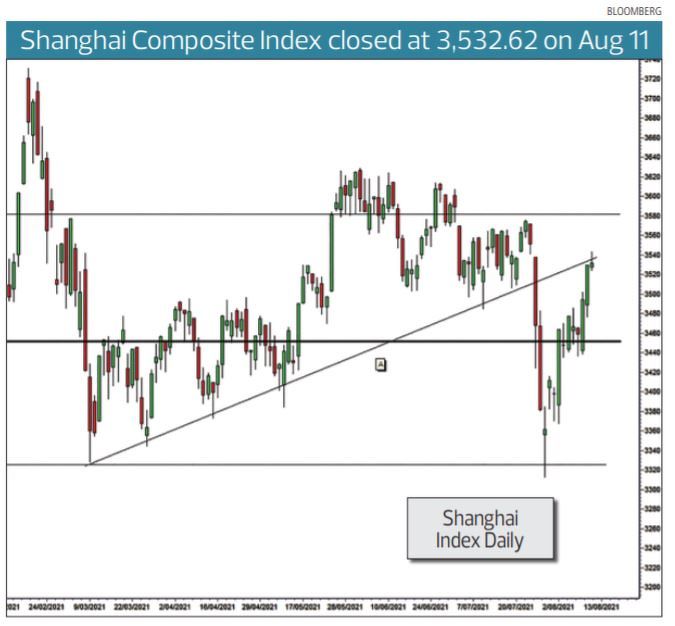China used the 2008 Summer Olympics as a coming out event, highlighting its engagement with the world in global events.
The country’s participation in the delayed Olympics, which recently concluded in Tokyo, has also triggered another surge of pride.
It is an affirmation of China’s strength and resilience in the Covid era. Their medal tally success also lays the foundation for the Beijing Winter Olympics in 2022.
So what does this have to do with the investment environment in China?
Participation in the Olympics has become increasingly important for China, and that means there will be a significant number of state resources and programmes directed towards Olympic related events.
Just as the crackdown on education coaching providers was foreshadowed in the policy documents in May, then so too will the Olympic policy be signalled in newer state announcements. The latter will provide a clue as to which industries will benefit from increased support and encouragement from Olympic related policies.
With Chinese athletes excelling at the Olympic Games, it is no accident that China’s State Council, or cabinet, issued a national fitness plan on Aug 3 — even as Chinese athletes continued to compete at the Tokyo 2020 Olympic Games.
It runs from this year to 2025 and is the latest of its kind to promote exercise and physical health. Amongst other things, the new plan aims to create or expand 2,000 sports parks and stadiums by 2025.
The national fitness plan also sets ambitious goals for the proportion of residents exercising regularly to reach 38.5%.
It was released alongside the description of excessive gaming as a “new opium”, a move to reduce online gaming activity and increase participation in sports.
China is clearly setting goals to make citizens fitter. This gives the sport industry a boost, so we can expect that it will be significantly bigger by 2025.
In achieving these goals, it is estimated that the sports industry will need to expand significantly, reaching a value of around 5 trillion yuan (US$1.04 trillion) by 2025.
Whilst there is no urgency to immediately invest in sport related areas, its notable that following the announcement, companies like Anta Sports Products — a Chinese sports equipment multinational corporation based in Jinjiang — quickly climbed by more than 7% towards a record high.
This group of stocks in this industry area will bear watching in coming weeks. They will directly benefit from the roll-out of this policy.
I remain largely disinterested in the Olympics, but I am interested in the investment opportunities that will emerge from this new emphasis on health and fitness.
Technical outlook for the Shanghai market

The Shanghai index has roared back following the three day collapse starting on July 26. The initial rebound from the lows of 3,313 delivered gains of 30% to 60% over a week.
The current rally follows a brief period of consolidation around 3,450. This rally signals a rapid return to trading in the upper half of the longterm trading band which has dominated the index since the start of this year.
The dominant feature of the Index chart is the long-term support and resistance level near 3,450. The market has oscillated around this level on a consistent basis. The upper level of the trading band is the resistance level near 3,580. The lower limits of the trading band are near 3,330.
The general upwards trend starting in March was defined by trend line A and this led to the market breaking into the upper half of the oscillation band in late May.
The index enjoyed a bullish few months until the collapse below trend line A and a further collapse below the central support level near 3,450. The current rally above 3,450 has lifted the market into the upper half of this trading band.
This is a bullish environment, and this sentiment is restrained by two features. The most immediate constraint is the value of trend line A.
There is a high probability this will act as a resistance feature and act as a block on upwards moves. Current value is near 3,540.
The index may cluster around the value of the uptrend line before developing a new uptrend move towards the upper edge of the trading band.
A successful break above trend line A still faces strong resistance from the upper edge of the trading and near 3,580.
These two resistance features suggest that the index will be confined to the lower half of the upper section of the trading band for several weeks.
This is a rally and does not have not the characteristics of a sustainable uptrend. A sustainable uptrend is defined with multiple tests of the trend line as a support feature. A rally moves quickly without any sustained retreat and rebound activity that confirms a trend line.
The index may retreat from the value of trend line A and investors will watch for the support level near 3,450 to hold. Further rally, retreat and rebound activity will enable the placement of a reliable trend line.
Until then, the index is treated as a fast moving rally with the potential to collapse again and test the support 3,450 level.
The bullish aspect of this behaviour is the way the index has again moved into the upper half of the long-term trading band.
Daryl Guppy is an international financial technical analysis expert and special consultant to Axicorp. He has provided weekly Shanghai Index analysis for mainland Chinese media for two decades. Guppy appears regularly on CNBC Asia and is known as “The Chart Man”. He is a national board member of the Australia China Business Council. The writer owns China stock and index ETFs
Photo: Bloomberg



